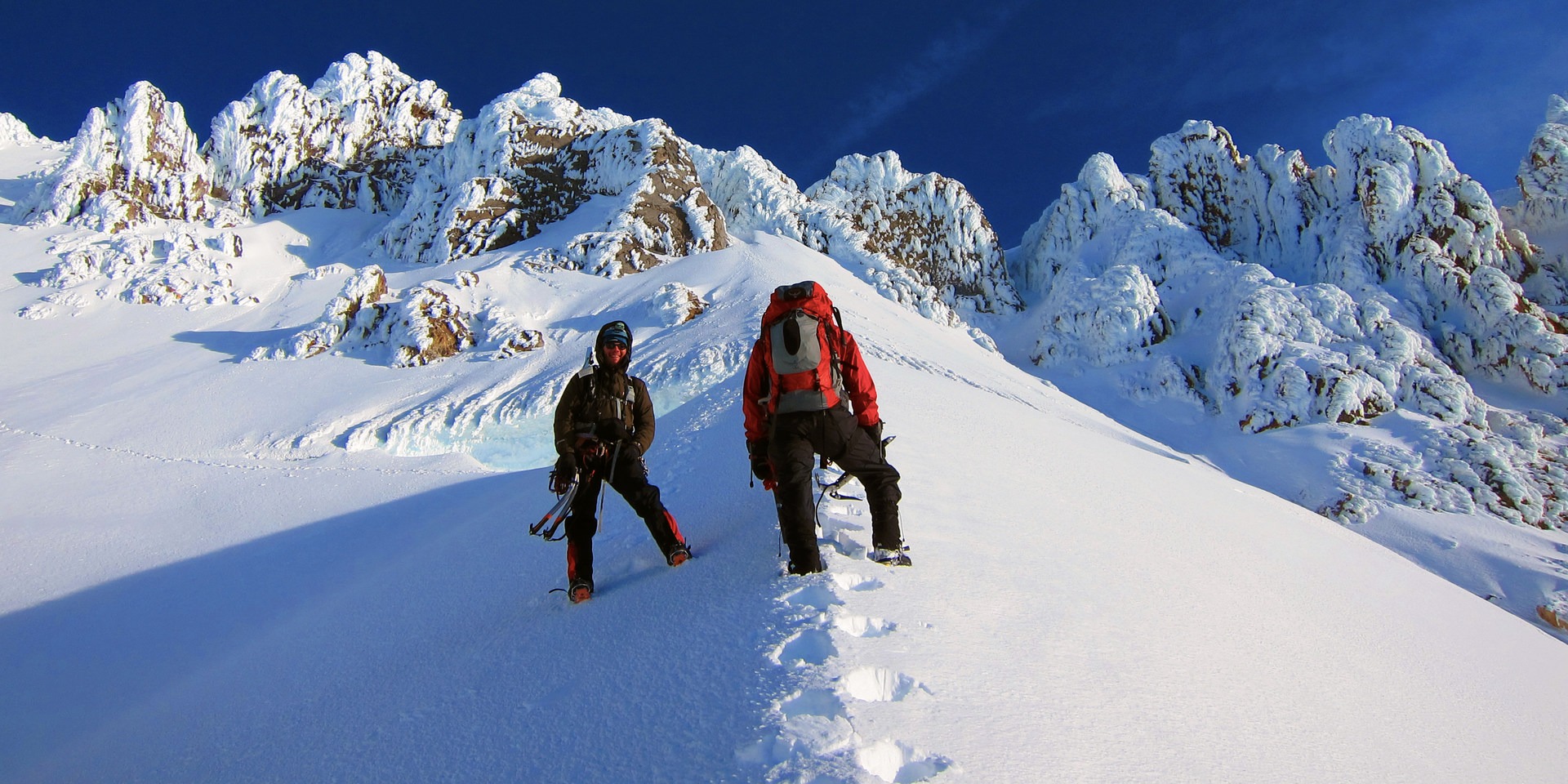You are here
When I decided to leap headfirst into mountaineering last winter, I desperately wished there was a wise, old sage to hand over the information I needed in easy to digest, bite-sized pieces. I struggled to progress as I realized that classes were expensive and often too remedial, and going out with seasoned climbers could be a recipe for panic attacks as I wrestled to find my comfort zone in an exceedingly uncomfortable sport. I fell flat on my face more times than I can count, and my magical Yoda never manifested out of a crevasse. So, after a year of climbing and learning and making lots of mistakes, I’ve decided to offer a few pieces of good advice that I wish I’d had when I started out. This is not a complete list, and I am by no means an expert, but these morsels should at least help to point you in the right direction.
1. Crampons
The first thing that everyone asked me when I started looking for winter climbing partners was, “Do you have your own ice axe and crampons?” I can’t believe how long I waited to actually purchase a pair. It was tempting to want to rent them or borrow some until I knew whether or not I even enjoyed winter alpinism enough, but I’ve learned that sometimes, the best thing to do is put your money where you mouth is and buy the damn gear. A decent set of non-technical, aluminum crampons that affix to most hiking boots will only set you back about $130, and the money spent is a great incentive to actually get out and use them!
2. Ice Axe with Leash
If you’re walking on terrain that requires crampons, you’re going to need an ice axe as a third point of contact on the way up a steep slope and as a necessary tool to self-arrest if you fall. Buy one and learn how to use it by throwing yourself down less-steep slopes with a lot of runout and no rock-fall. Get creative and slide head first, using your non-dominant arm to stop the fall; it’s like a survival game of slip and slide, and practice makes perfect! The instructor in my first-ever mountaineering course told numerous horror stories of climbers found dead without their ice axe as a means of convincing us to always use a leash to keep it affixed to our wrists. It worked. You’ll never see me without a leash on my axe, and I like to use a longer wrist leash to easily pass it from hand to hand when turning. Think of it as a stylish bracelet that helps you not die.
3. Knots
Knowing what knots to use in a bad situation is crucial to your survival if you’re climbing anything technical. There’s going to be a moment when you drop your ATC or you’re hanging off a ledge and you’ll need to mentally Rolodex through the knots in your brain to avoid a sticky situation. There are literally hundreds of blogs and enough YouTube videos to make your head spin on the subject, but the ones you definitely need to get started are: the Munter hitch, the clove hitch, the alpine butterfly, and the Prusik. Learn how to tie them with your eyes closed, behind your back, and one handed if you can. You’ll need them!
4. Avalanche Gear
If you’ll be traveling on or directly below snow slopes between 30 degrees and 55 degrees, you’re going to need avalanche gear. Not only that, but every member of your crew is going to need his or her own beacon, shovel, and probe. Before setting off on your adventure, stand in a circle and have everyone turn their beacons on and set them to transmit so that you know battery failure is not on the menu. Read your beacon’s manual before heading out so that you have a clear understanding of how to traverse an avalanche slope looking for a lost teammate. Memorize. Memorize. Memorize. Imagine using the equipment in a panic and make sure you know how to use it inside and out.
5. A Malleable Ego
Ego management has been the most difficult resource for me as I continue my journey into alpine climbing. As someone who got straight A's in school and excelled at anything I put my heart and soul into, mountaineering has been a non-stop frustration festival. There are layers upon layers of information and objective hazards to be aware of, and each new blockade forces me to find a way around it. Altitude, aerobic endurance, variable snow, head game, diet, training regimens, and staying warm are just a handful of obstacles I’ve had to experiment with and fail at to get where I am today, which is still a relatively beginner level. Oftentimes the best thing to do is step back, take a deep breath, and realize that this is all just recreation – it’s supposed to be fun! Many view alpinism as a path toward self-mastery due to the importance of keenly knowing yourself so that you can make good decisions on the mountain. When I choose to see my days in the wilderness as learning opportunities, I can easily flip my viewpoint toward the knowledge I gained, even when I don’t summit.
The list could go on forever, as mountaineering is a lifelong sport that no one ever truly masters, and perhaps that’s what makes it so compelling. If you’re motivated and interested in honing your skills and learning more, pick up a copy of Mountaineering: the Freedom of the Hills and also Training for the New Alpinism: A Manual for the Climber as Athlete. They have been invaluable resources for me on this insane ride. Happy climbing!





Comments
Sign In and share them.